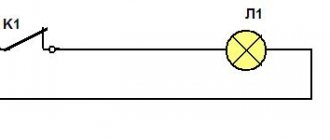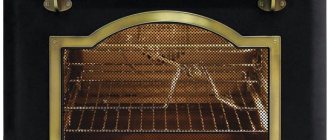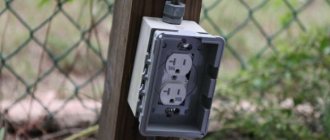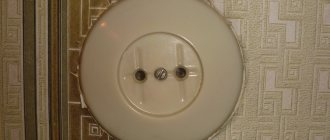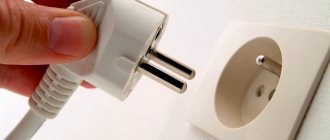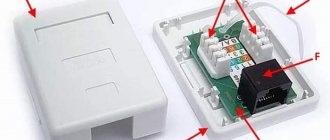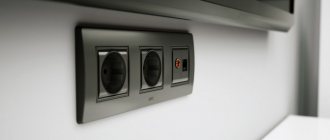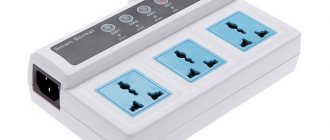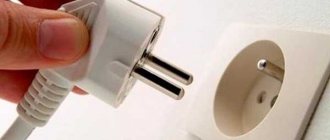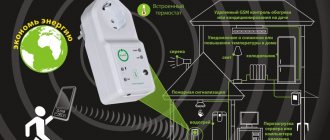Electrician in the house
Encyclopedia about electricity from A to Z
Masters catalog
Find the best master or company in your city
Termination TV socket
At the moment, television sockets are quite widely represented on the market and are increasingly used. At the same time, quite often one can encounter complaints about their operation and the quality of the television signal transmitted by such sockets.
But in most cases, these complaints are unfounded, and the low signal quality is associated with the wrong choice of sockets themselves. Therefore, in order not to be disappointed in this electrical installation equipment and not throw money away, let’s look into this issue.
- Connection diagrams for TV sockets Feed-through diagram
- Star scheme
- Selecting TV outlets
TV sockets: TV socket, pass-through and terminal, difference and connection
Today on the market you can find terminal, single and pass-through TV sockets. The listed products are characterized not only by name, but also have different designs and purposes. TV socket terminal and pass-through, the difference of which lies in both design and application - these are just some of the types of TV sockets that are available today.
Out of ignorance, some people do not use them quite correctly. Because of this, a negative attitude towards such electrical outlets is being formed and dissatisfaction with the quality of the TV signal . However, correct installation of the right type of socket is quite capable of correcting this situation. Therefore, in order not to become a victim of ignorance in the same way, we will talk in more detail about the types of TV sockets, and also determine the purpose for which each of them is designed and what it is needed for.
Types and patterns of use
In order to fully understand the specifics of installing TV sockets, as well as to understand where and what type is used, how to connect a TV socket, you need to consider not only their design features, but also the connection diagrams. Because to lay out the coverage of a television signal, based on its frequency, various methods and connection diagrams are used.
Structure of different TV sockets
Let's start with the differences that TV outlets have. It is determined by various areas of application , which we will discuss below.
Let's start with the simplest TV socket - a single one. This outlet is simply a contact connection that makes it possible to connect the TV antenna cable to the network. According to the instructions of the manufacturing plants, the degree of signal drop in them does not exceed 1 - 2 dB, which is determined only by the transition resistances of the contact junctions.
The terminal socket in this matter is much more complicated. In addition to the direct contact connection, it also contains a special circuit that is designed to “quench” the reflected signal.
Description of the scheme
The bottom line is that each TV not only picks up the television signal, but also returns part of it to the network. The part that it returns is usually called the reflected signal. Compared to the main one, the power of the reflected signal is not so high, but together with several TVs this can cause significant interference.
The reflected signal can be seen on some other TV as an overlay or as interference. And in order to avoid this effect, a special circuit is used to suppress the reflected signal.
As a result, the terminal socket, with the exception of losses of 1 - 2 dB, which are caused by switching resistances, also suffers losses from 8 to 15 dB, which also cause the specified filter to work.
Be careful! GOST 28324–89 clearly states that the signal frequency should be 57 - 83 dB. Increasing, and even more so decreasing, the signal power can lead to interference and a decrease in proper image quality. As a result, it turns out that even the presence of one terminal socket significantly reduces the signal level.
But the device of the pass-through socket is even more complex. In addition to the filter and the direct contact connection, it contains another contact connection for connecting other TV sockets. As a result of the decrease, the signal level at such an outlet can reach about 15 - 20 dB.
At the end of such a circuit, a terminal socket must be installed. It differs from a checkpoint, as we have already found out, only in the presence of only one entrance. And its filter is entirely controlled by the reflected signal.
The main disadvantage of this connection method is the gradual deterioration of the signal in each subsequent outlet. At the same time, the cost of implementing such a scheme is significantly lower due to the absence of the need to purchase an antenna socket - splitter.
The so-called hybrid or mixed scheme is also used quite often and effectively . Its essence lies in connecting some of the sockets according to a through circuit, and others according to a “star” circuit. This makes it possible to save money when connecting devices at a considerable distance from the splitter.
Connection algorithm
The question of how and in what cases a pass-through socket should be used has been considered in detail; now we can move on to the task of connecting it. It is quite possible to perform this procedure yourself, and this does not require special tools or skills.
- First you need to install a mounting box for mounting the socket. For television sockets they use the same mountings that are used for power switches and sockets. To do this, you will need to drill a hole of the appropriate diameter in the wall. This can be done using the appropriate attachment for the hammer drill.
- After this, we install the mortgage box. It can be fixed with self-tapping screws, or you can simply place it on gypsum putties.
- After this, you need to stretch the television cable to the outlet and move from it to the next outlet. As a rule, the cable is hidden from prying eyes, so there is no way to do this without gating the walls. Otherwise, the cable is mounted on the wall in a special plastic box.
Network topologies
The term network topology refers to the way computers are connected into a network. You may also hear other names - network structure or network configuration (they are the same thing). In addition, the concept of topology includes many rules that determine the placement of computers, methods of laying cables, methods of placing connecting equipment, and much more. To date, several basic topologies have been formed and established. Of these, we can note “ tire ”, “ ring ” and “ star ”.
Bus topology
Bus topology (or, as it is often called common bus or backbone ) involves the use of one cable to which all workstations are connected.
The common cable is used by all stations in turn. All messages sent by individual workstations are received and listened to by all other computers connected to the network. From this stream, each workstation selects messages addressed only to it.
Advantages of the bus topology:
- ease of setup;
- relative ease of installation and low cost if all workstations are located nearby;
- The failure of one or more workstations does not in any way affect the operation of the entire network.
Disadvantages of the bus topology:
- bus problems anywhere (cable break, network connector failure) lead to network inoperability;
- difficulty in troubleshooting;
It was according to the “bus” topology that local networks were built on coaxial cable. In this case, sections of coaxial cable connected by T-connectors acted as a bus. The bus was laid through all the rooms and approached each computer. The side pin of the T-connector was inserted into the connector on the network card. Here's what it looked like: Now such networks are hopelessly outdated and have been replaced everywhere by a star on twisted pair, but equipment for coaxial cable can still be seen in some enterprises.
Ring topology
A ring is a local network topology in which workstations are connected in series to each other, forming a closed ring. Data is transferred from one workstation to another in one direction (in a circle). Each PC works as a repeater, relaying messages to the next PC, i.e. data is transferred from one computer to another as if in a relay race. If a computer receives data intended for another computer, it transmits it further along the ring; otherwise, it is not transmitted further.
Advantages of ring topology:
- ease of installation;
- almost complete absence of additional equipment;
- Possibility of stable operation without a significant drop in data transfer speed under heavy network load.
However, the “ring” also has significant disadvantages:
- each workstation must actively participate in the transfer of information; if at least one of them fails or the cable breaks, the operation of the entire network stops;
- connecting a new workstation requires a short-term shutdown of the network, since the ring must be open during installation of a new PC;
- complexity of configuration and setup;
- Difficulty in troubleshooting.
Ring network topology is used quite rarely. It found its main application in fiber optic networks of the Token Ring standard.
Star topology
A star is a local network topology where each workstation is connected to a central device (switch or router). The central device controls the movement of packets in the network. Each computer is connected via a network card to the switch with a separate cable.
The “star” topology today has become the main one in the construction of local networks. This happened due to its many advantages:
- failure of one workstation or damage to its cable does not affect the operation of the entire network;
- excellent scalability: to connect a new workstation, just lay a separate cable from the switch;
- easy troubleshooting and network interruptions;
- high performance;
- ease of setup and administration;
- Additional equipment can be easily integrated into the network.
However, like any topology, the “star” is not without its drawbacks:
- failure of the central switch will result in the inoperability of the entire network;
Star is the most common topology for wired and wireless networks. An example of a star topology is a network with a twisted pair cable and a switch as the central device. These are the networks found in most organizations.
Which TV socket to choose and what is the difference between simple, pass-through and terminal ones
The installation of television sockets has recently become a generally accepted rule when renovating a home and laying various communications. In fact, it is much more aesthetically pleasing than a cable stretching across the entire baseboard. In addition, this technical solution allows you to install TVs in any room. However, the sockets for connecting them are fundamentally different from those through which electrical power is supplied. If these features are not taken into account, the image quality on the screens will be poor. Today we will talk about how to avoid such an incident.
A little theory
The radio signal through which an image appears on the screen of a television receiver is of the same nature as household electricity. It is characterized by magnetic field strength, current strength and other parameters. It has a wave character to the same extent, but the frequency of changes in the direction of the current is thousands of times higher.
For this reason, it cannot be transmitted through metal conductors made of aluminum or copper - the high-frequency magnetic field displaces the current onto the surface of the conductor, as a result of which its effective cross-section decreases and the electrical resistance increases. In radio engineering, this phenomenon is called the skin effect. For example: at a frequency of 50 Hz (household power supply), the thickness of the skin layer reaches 8.5 mm.
And at a frequency of 50 MHz (the first television channel) it is equal to 0.001 mm.
From an antenna or other source, the radio signal is transmitted via a so-called coaxial cable. It consists of an outer metal braid, a polyethylene filler and a central copper core. The conductive layer in it is polyethylene, and the metal parts reflect the wave.
The main parameter of a coaxial cable is the characteristic impedance, which characterizes the degree of signal attenuation. First of all, it depends on the diameter of the cable and the thickness of the polyethylene layer between the braid and the central core. Traditionally it is equal to 50 or 75 Ohms.
However, unlike electrical resistance, a cable with a higher resistance value has less attenuation.
Both the radio signal source (antenna, router) and its receiver must be matched in impedance to the coaxial cable. If this condition is not met, then the wave will be reflected from the obstacle and go out - if you see any image on the screen, it will be with very large distortions.
Types of television sockets
Television sockets are a switching device to which a radio signal is supplied via a coaxial cable at frequencies above 10 kHz. They differ from electrical plugs in appearance by the connector - it is the same as the cable input connector on the TV. To connect to it, a so-called chip is used. These sockets come in three types:
- Simple single.
- Checkpoint.
- Final.
A simple single socket is just a designed place for securing a coaxial cable and a television connector. It does not have any matching devices, so the signal, upon reaching it, is partially reflected and attenuated. This effect is enhanced if there is no receiver connected to the outlet.
But usually the attenuation does not exceed 2 dB - approximately 1.6 times. It is called single precisely because of the effect of reflecting the signal back into the cable, as a result of which a standing wave appears in it, which will affect the image quality if another television receiver is connected between the antenna and the single socket.
The main differences between antenna cables
For high-quality installation and connection, it is not enough to purchase suitable television sockets. Here you cannot do without an antenna coaxial cable, which has a special structure. It consists of:
- One core that transmits a television signal.
- A protective shield that serves as a barrier and dampens surrounding electromagnetic fields.
This is usually a white or black round wire with PVC insulation. The name of this cable is RK-75. The cable has a characteristic impedance of 75 Ohms. With a hidden installation scheme, the color of the insulation does not play any role. Despite the fact that the wire itself is thick and elastic, it has a fairly thin layer of insulation. The dual role of the shield is to protect against electromagnetic interference and to prevent the emission of sensitive high-frequency signals.
If any component of the cable fails, the signal will be disrupted. Therefore, when buying a cable, you should check the integrity and strength of the sheath, and during packaging and transportation you should make sure that the cable does not bend, thereby protecting the copper core and screen braid from damage.
For installation under plaster or other finishing materials, cable brands such as SAT 50, RG 6 and RG 11 are suitable.
For an overview of coaxial cables for TV video, see below:
Termination TV socket: how to install
At the moment, television sockets are quite widely represented on the market and are increasingly used. At the same time, quite often one can encounter complaints about their operation and the quality of the television signal transmitted by such sockets.
But in most cases, these complaints are unfounded, and the low signal quality is associated with the wrong choice of sockets themselves. Therefore, in order not to be disappointed in this electrical installation equipment and not throw money away, let’s look into this issue.
Connection diagrams for TV sockets
First of all, let's look at the possible options for connecting television outlets. After all, the subsequent choice of the type of TV sockets for installation directly depends on this. At the moment, connection schemes are actively used - through-type and star-type.
Passage scheme
Let's start with the less commonly used, but cheaper and easier to install, pass-through circuit. The essence of this scheme is to connect all TV sockets in series and then connect an antenna to the first one.
Pass-through diagram for connecting TV sockets
So:
- The main feature of this circuit is that for each subsequent socket, the previous one is the source of the signal. In this regard, certain problems arise related to both the level of signal drop and the need to reduce the level of the reflected signal.
- In order to fulfill these requirements, a television terminal and pass-through socket is used. The terminal socket is installed at the end of this loop, and all other TV sockets in the loop must be pass-through.
- The main disadvantage of this type of connection is the reduction in signal level at each subsequent outlet. So usually the drop in signal level at each subsequent outlet is at least 13 - 15 dB.
Note! According to GOST 28324-89, the signal level should be 57 - 83 dB. That is, even at the maximum level of the received signal, installing more than two pass-through sockets will reduce its level below the maximum permissible values. In this regard, it is likely that the image quality will decrease.
- The TV terminal socket is no exception and the drop in signal level on it is no less. The fact is that to reduce the level of the reflected signal, a special circuit is used, which suppresses this signal. A side effect of this suppression is a decrease in signal level. If you “bite” it, as some craftsmen suggest, then the effect of overlapping images of different TVs in the cable is quite likely.
- Not a disadvantage, but a significant limitation, is the impossibility of using a pass-through circuit to create a digital television network. In this regard, a terminal and feed-through TV socket with a SAT output intended for satellite digital television will not be effective. At the same time, terminal sockets are actively used in digital television, if this is the only socket connected to the receiver.
Design features of sockets
The last thing I want to talk about in this article is the design features of the TV outlets themselves.
In appearance and in terms of installation method, they resemble ordinary power ones, except perhaps for the connectors into which the antenna cable is plugged.
There are single sockets used for the star circuit. They have the simplest design, as well as matching filters that prevent signal reflection, due to which the level drop is no more than 3 dB - this practically does not affect the quality.
Pass-through sockets are more complex in design; they solve the problem of matching and transmitting a signal with minimal losses. If we talk about the drop in general, then at the output connector to the receiver it is no more than 3 dB, but the signal transmitted further drops by 10...15 dB.
The terminal socket for a pass-through circuit resembles a single one, but for all that it is significantly different, both in its purpose and design, and therefore they should not be confused in any way.
Features of parallel and pass-through circuits
If you are not limited to installing an outlet for one TV and want to use a “star” circuit, pay attention to the following nuances:
- First of all, we install the splitter, and only then the sockets.
- We connect one cable to each splitter output, which should end with the installation of one socket (simple or terminal).
- When installing simple modules, please note that they are not equipped with filters.
Watch the frequency. According to GOST (R 52023), the possible frequency must fall within the range from 40 to 1000 MHz, and some devices “narrow” these limits. For example, the operating range of DOCSIS v.2.0 is from 47 to 862 MHz, respectively, sockets support these restrictions.
If you are the owner of a large two-story cottage, then the wiring of cables for various purposes must be thought out before finishing work begins. The diagram shows an example of connecting various technical devices indicating the type of cables, numbers indicate television receivers
If you are not interested in digital television and have chosen a serial connection scheme, do not forget about the quantitative limitation.
The more sockets there are, the weaker the signal. Of the levels allowed by Russian GOST of 57-83 dB, already with 3-4 pieces installed, you exhaust the allotted limit (for each socket - about 15 dB).
The following article will introduce you to the specifics of the installation, the contents of which we recommend that you familiarize yourself with.
Installation procedure for a simple TV socket
Before installing the socket, it is necessary to install a cable (for a simple single socket, the only cable leading from the switchgear). It is masked either in a closed way - under plaster (plasterboard, decorative panel), or openly - on the surface of the wall, in a cable channel. The second option requires external (overhead) sockets.
For a sample, let's take a high-quality product from a French manufacturer.
Socket for connecting a coaxial antenna cable from the famous French brand Schneider Electric. This is a simple (single) module MGU5.462.18ZD, designed to connect one TV
Before installation, use a drill with a round attachment to cut a hole and insert a plastic box (socket box). A cable about 15 cm long should come out of the hole.
The end of the cable should be prepared: remove part of the outer insulation so that the copper core protrudes by about half a centimeter, and part of the shielding braid is also exposed
After separating the front panel, we find the clamping screw that ensures stability and unscrew it a little to make it easier to insert the antenna cable
We insert the cable in the direction of the arrow and fix it with a special clamp, tightening the screw.
Under the arrow there is a small through hole to control the connection of the copper conductor. But for greater reliability, a visual inspection is not enough; to more effectively check the quality of the installation, you need to use a tester
Checking with a tester will eliminate the occurrence of a short circuit due to accidental contact of the braid with the conductor.
Carefully, trying not to disturb the position of the cable, insert the housing into the socket box, fasten it with fasteners and snap the front decorative panel into place. Using a level, level the position of the block
The result of assembly and installation is no protruding wires or unprotected connectors.
The socket block usually represents one long panel, divided into several functional sectors: for connecting a coaxial cable, RJ-45 Internet wire (twisted pair) or electrical cables
Installation of the pass-through module will be slightly different.
Legrand 753851 Valena ALLURE. TV socket with star topology 0-2400 MHz. With front panel.
Homeland of the brand: France
Specifications
- vendor code
- Color beige
- Valena ALLURE series
- Installation depth 40 mm
- Minimum operating temperature 5 °C
- Maximum operating temperature 45 °C
- Max. cable cross-section 8 mm²
- Country of origin: France
- Method/place of attachment
- Color Light cream/elephant. bone
- IP degree of protection IP21
- Frequency 4 .. 2400 MHz
- Maximum cable diameter for TV sockets 7 mm
- Number of outputs 1
Description
Valena ALLURE.TV socket with star topology 0-2400 MHz.With front panel.Ivory
Legrand 753851 Valena ALLURE. TV socket with star topology 0-2400 MHz. With front panel. (article 753851) buy in Moscow at a favorable price. To get even better offers, follow our promotions! Our online store sells all types of tools with fast delivery throughout Moscow and Russia.
Delivery to the cities of the Moscow region: Balashikha, Podolsk, Khimki, Korolev, Mytishchi, Lyubertsy, Krasnogorsk, Elektrostal, Kolomna, Odintsovo, Domodedovo, Serpukhov, Shchelkovo, Orekhovo-Zuevo, Ramenskoye, Dolgoprudny, Zhukovsky, Pushkino, Reutov, Sergiev Posad, Voskresensk , Lobnya, Klin, Ivanteevka, Dubna, Yegoryevsk, Chekhov, Dmitrov, Vidnoye, Stupino, Pavlovsky Posad, Naro-Fominsk, Fryazino, Lytkarino, Dzerzhinsky and Solnechnogorsk.
How to determine the height of the location
As a rule, the TV socket is mounted at approximately the same height as the TV. If the TV is placed directly on the wall, then it is advisable to hide the socket behind it. This also solves the aesthetic issue: connectors and wires will not be visible. Safety measures will also be observed: the socket will not become a subject for children to play with, and pets will not be able to chew the wires. Be sure to watch the video on how to install sockets behind the TV:
It is customary to place such equipment based on the eye level of the person sitting on the chair. On average, this is a height of 130 cm from the floor to the outlet. In some rooms, such as kitchens, this figure is slightly higher, this is due to the fact that the TV is placed in a free space, saving work space.
If you need to buy a television socket, then you should pay attention to high-quality products produced by well-known manufacturers. You should not buy TV and audio sockets at a more attractive, reduced price. Such equipment will not be able to provide a good signal. In addition, in order for the sockets to fit harmoniously into the interior, they must all be from the same collection of a certain manufacturer.
Despite the regular updating of the market with new modifications of modern audio, video and TV equipment, there are traditional principles that ensure reliable signal transmission. One of them is the equipment of stationary sockets.
Here you will learn how to install a television socket and in what sequence the point is connected. For independent craftsmen, we have thoroughly analyzed a number of important nuances. To optimize the perception of the material, we supplemented the information with diagrams, photo illustrations and video tutorials.
Modern TV differs from its predecessors from the last century in its greater capabilities and versatility. This is not just a video signal transmitter, but part of a multifunctional multimedia system.
It includes the broadcast of many domestic and foreign television channels, the ability to view photographs and videos from mobile devices, access to the Internet, and the use of game consoles.
With a huge load on the router, the wireless connection is not always reliable, so you should not neglect the classic installation of an outlet for the TV.
The choice of modern, wall-mounted modules is quite extensive. We recommend paying attention to series from brands such as Legrand, Schneider Electric, GIRA, IEK. They have a neat appearance, are made of durable materials and do not cause difficulties during installation.
Standard module design
The installation of television equipment has some differences from and is considered separately, since the most important parts - cables and sockets - are also different.
There are many design options even for products from the same manufacturer (for example, Legrand produces the popular Valena, Celian, Etika, Galea Life series), but there are no fundamental differences in the device.
Let's look at the structure of the socket using the example of the ABB Busch-Jaeger model:
Externally, the design of almost all types of TV sockets is the same: a plastic strip that is attached with two miniature screws, and a TV input right in the center
If we consider a sample from the Basic 55 series, it consists of the following parts:
Construction of a simple television socket: 1 – front panel, which performs a decorative and protective function; 2 – support that fixes the body and parts of the socket to each other; 3 – printed circuit board organizing the connection
The structure of the printed circuit board may differ - for more complex modules, electronic circuits are located on it. On the reverse side there is a mechanism responsible for fixing the antenna cable.
Types of sockets by purpose
Before installing electrical equipment, you need to decide on the choice of sockets for the TV on the wall.
To make it easier to navigate the various modifications, manufacturers have identified three main types:
- simple (single);
- checkpoints;
- terminal.
The functional focus is inherent in the names of the categories; each of them has its own characteristics.
For example, to create the simplest circuit, which involves one single module that operates independently, you will need a simple socket. It is fundamentally different from the final one, so when purchasing, ask for a product of the specified type.
Assembly diagram of a simple socket that ensures normal signal flow when equipping a single point in the apartment. If you install another type instead, interference will occur
Simply put, if you have one TV in your room, to which there is one cable, then this is your only possible option. If you install several TVs in your apartment, but use a standard splitter, then simple sockets can also come in handy.
The structure of the pass-through socket is fundamentally different. It rather resembles a tee having 1 input and 2 parallel outputs.
One output is intended for connecting a video device, the second is for a cable going further (either to the next TV, or to the next pass-through socket). The chain of pass-through modules always ends with the installation of a terminal type socket.
There is a danger of signal weakening when creating chains of a large number of pass-through modules. To maintain sufficient power, we recommend limiting yourself to 3-4 pieces.
Only a parallel connection through a splitter (hub) can provide a high-quality signal. Additional expenses for purchasing an additional cable will be paid off by excellent video playback
The purpose of the terminal socket is to close the circuit of the passages.
Minimum set for the living room
Previously, when installing a TV, nothing other than power supply was required, since the antenna was connected directly to the receiver and installed next to it or, to obtain a more powerful signal, it was brought outside, to the roof or to the balcony.
